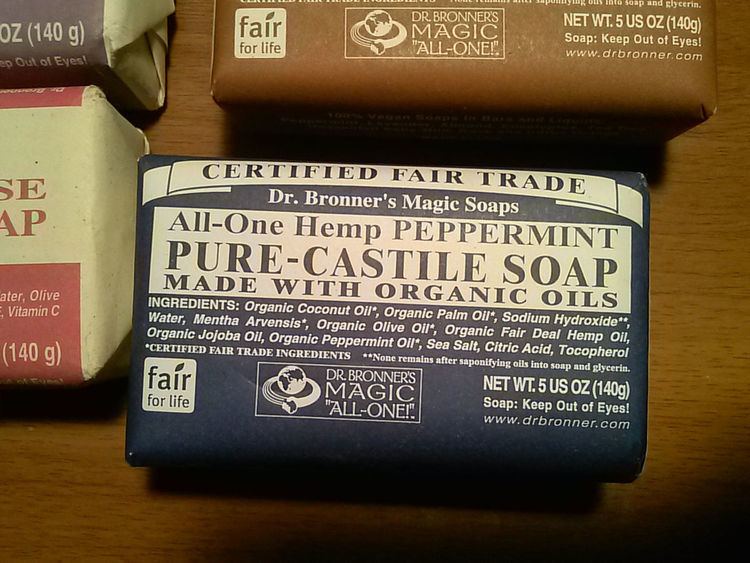 | ||
Castile soap is a name used in English-speaking countries for olive oil based soap made in a style similar to that originating in the Castile region of Spain. Traditionally made with olive oil, in many parts of the world it still is. It can be either bar soap made with sodium hydroxide or liquid soap made with potassium hydroxide.
Contents
History
The origins of Castile soap go back to the Levant, where Aleppo soap-makers have made hard soaps based on olive and laurel oil for millennia.
It is commonly believed that the Crusaders brought Aleppo soap back to Europe in the 11th century, based on the claim that the earliest soap made in Europe was just after the Crusades, but in fact in the first century AD the Romans knew about soap and Zosimos of Panopolis described in c. 300 AD soap and soapmaking. Following the Crusades, production of this soap extended to the whole Mediterranean area.
In the 17th century the soap caused controversy in England, since it supplanted the unnamed local soap after the Spanish Catholic manufacturers purchased the monopoly on soap from the cash-strapped Carolinian government. Its ties to Catholicism caused a public-relations campaign to be established, featuring washerwomen showing how much more effective local soaps were than Castile soap. The sale of a monopoly in Protestant England to a Catholic company caused great uproar, ending with the Castile soap company eventually being stripped of the monopoly.
Changes
Early soap-makers in Europe did not have easy access to laurel oil and therefore dropped it from their formulations, thereby creating an olive-oil soap now known as Castile soap.
Importations of "Castile soap" through Antwerp appear in the London port books of 1567–1568, though the Oxford English Dictionary has no references to "Castile soap" earlier than 1616. In his article "A short history of soap", John Hunt maintains that barilla (an impure form of sodium carbonate obtained from halophyte plant ashes that were high in sodium) was boiled with locally available olive oil, instead of with tallow.
Adding brine to the boiled liquor made the soap float to the surface, where the soap-boiler could skim it off, leaving the excess lye and impurities to settle out. While Aleppo soap tends to be green, this produced what was probably the first white hard soap, which hardened further as it aged, without losing its whiteness, forming jabón de Castilla.
Apothecaries knew the product by the Latin names of sapo hispaniensis (Spanish soap) or of sapo castilliensis (Castilian soap).
